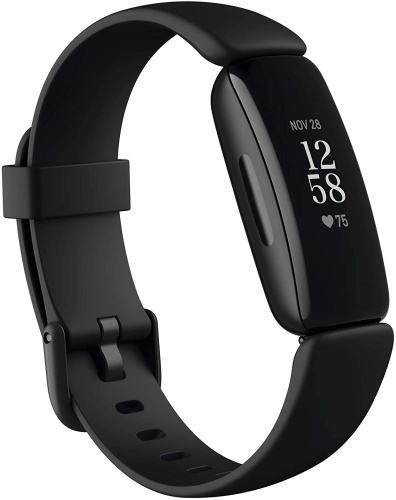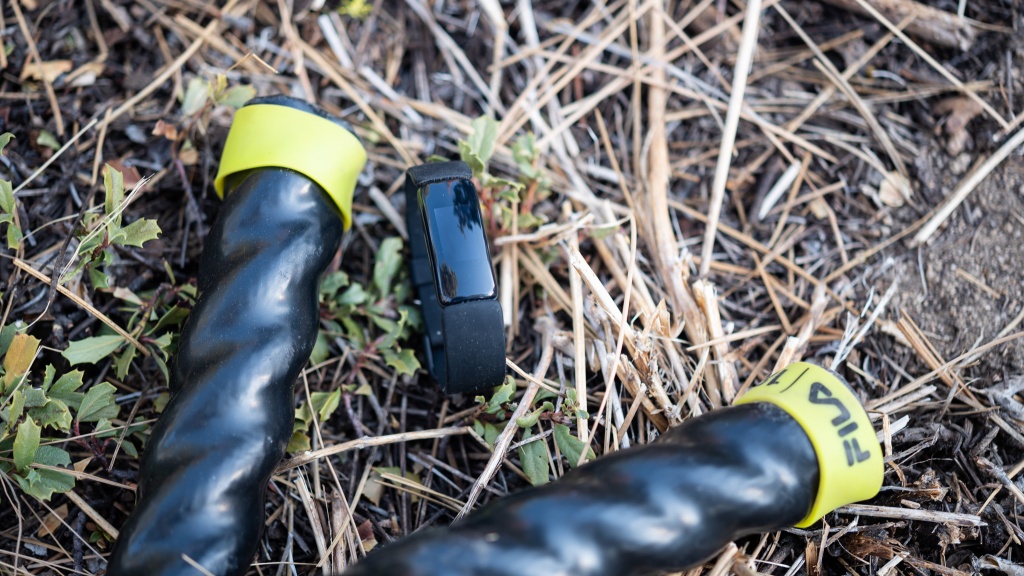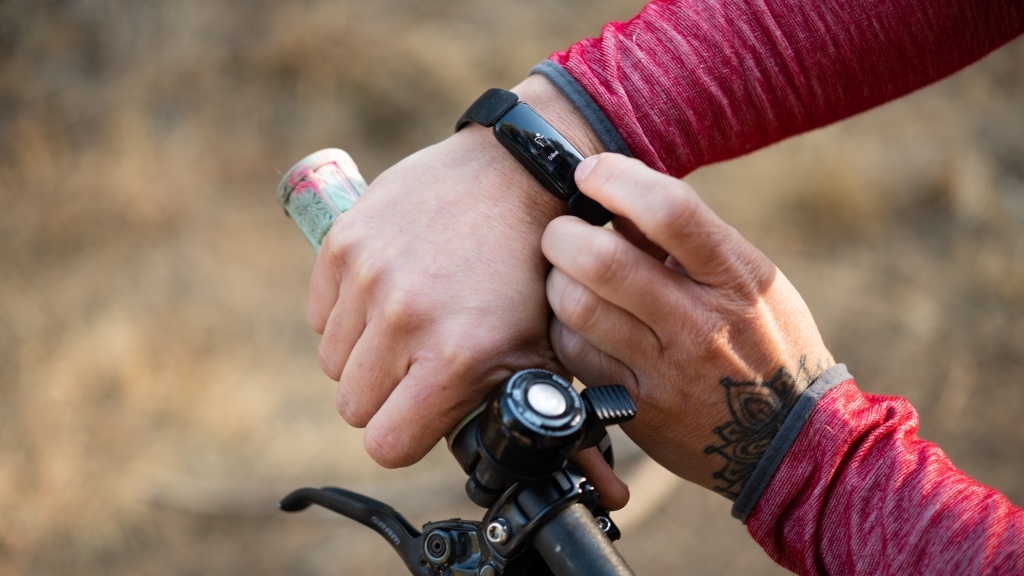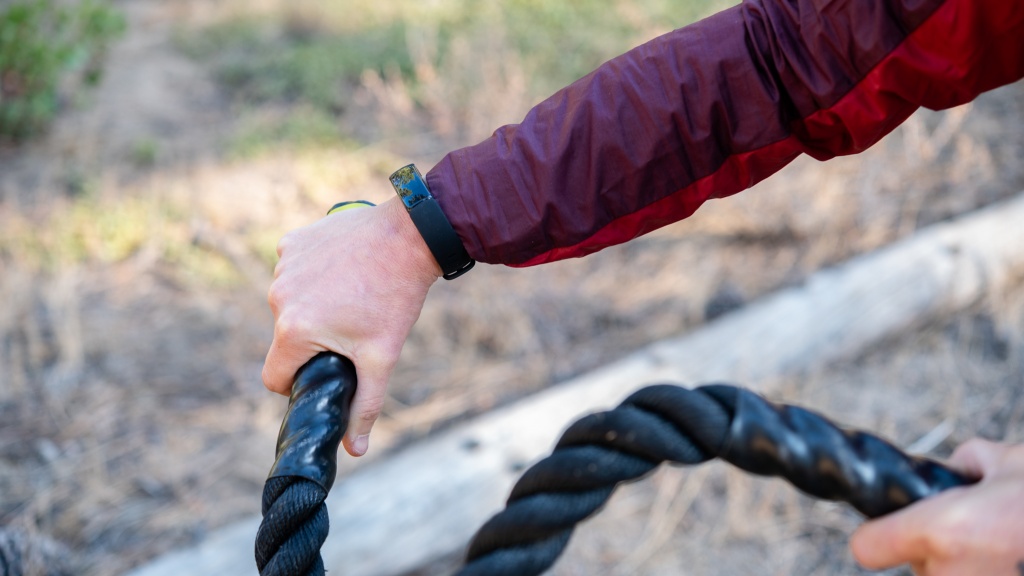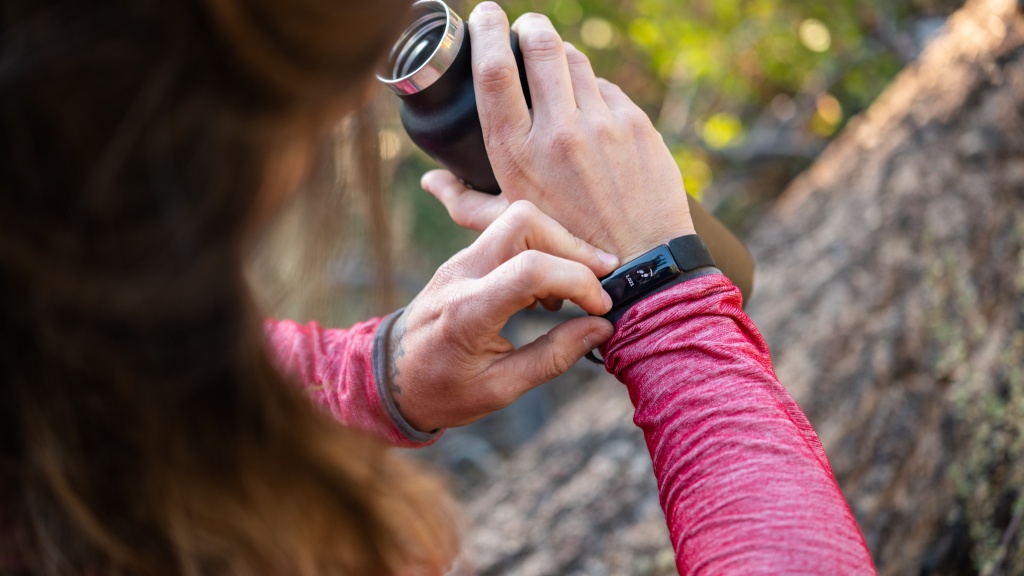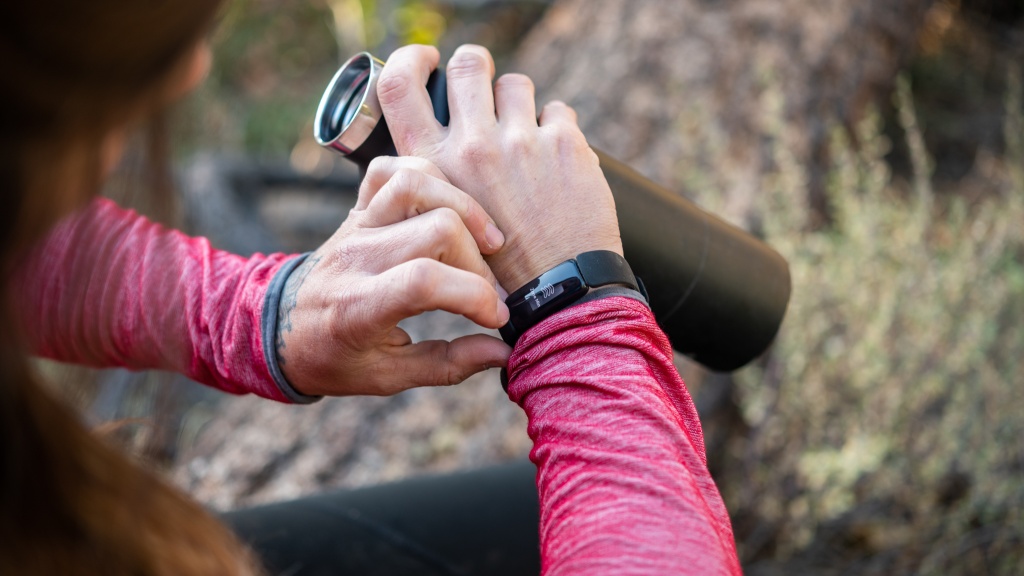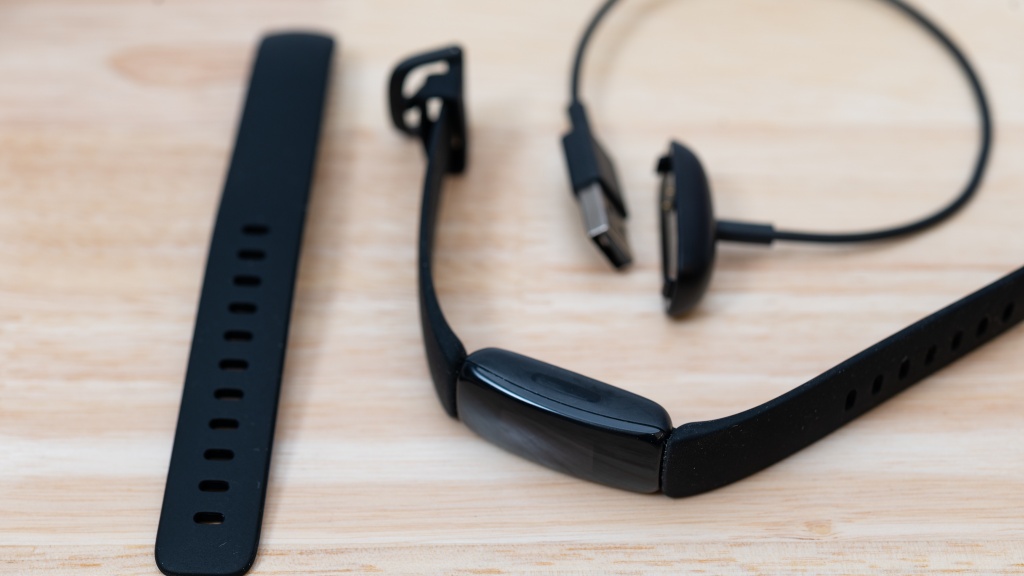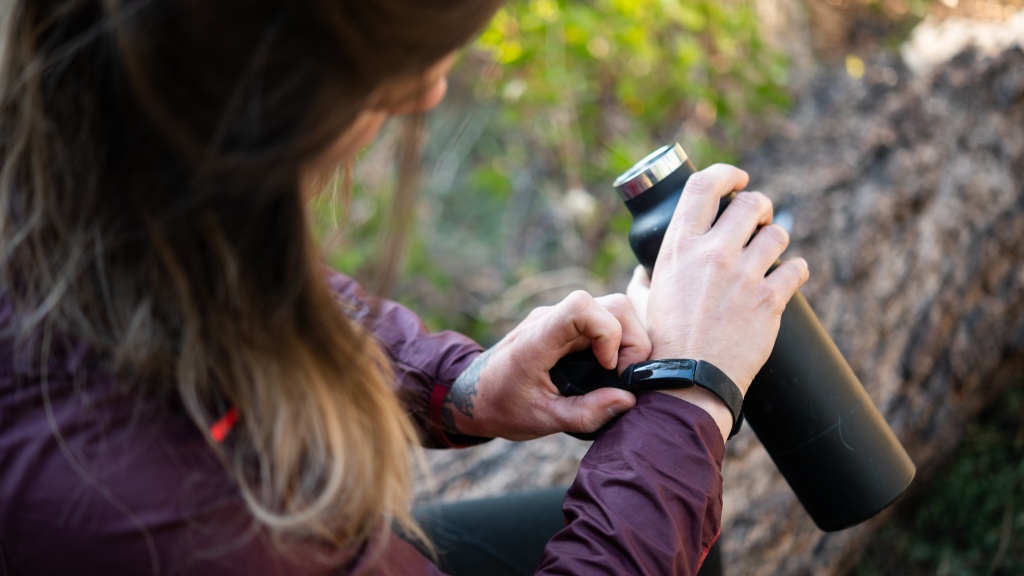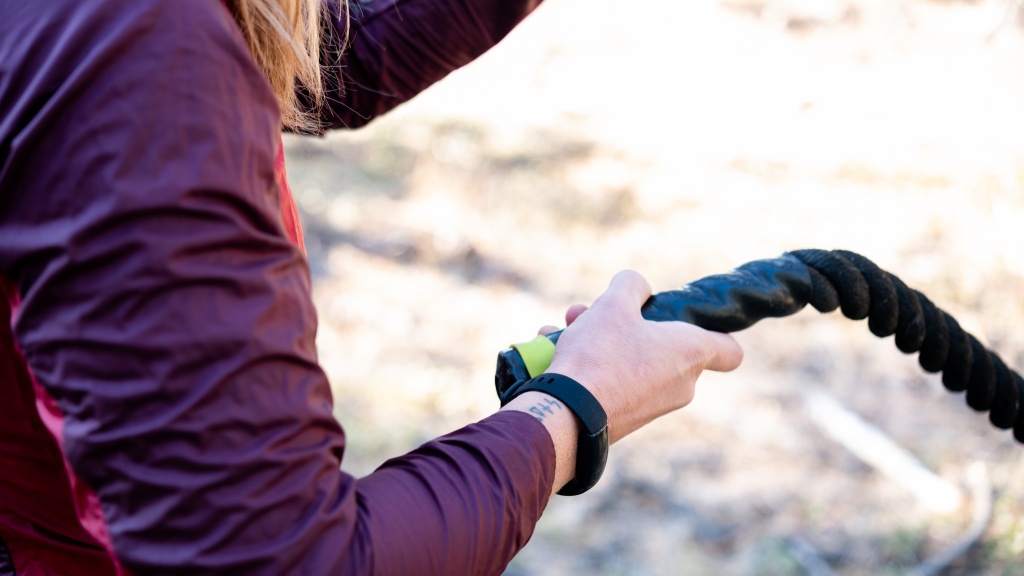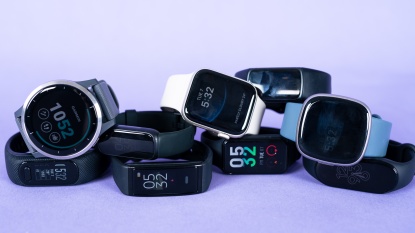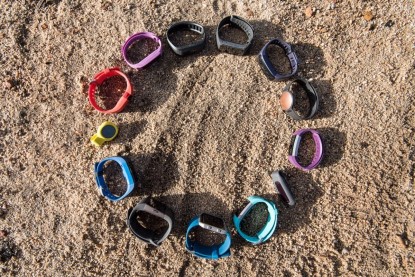Fitbit Inspire 2 Review
Our Verdict
Our Analysis and Test Results
We think the Fitbit Inspire 2 is a great option if you are looking to save some cash with a smaller and more basic fitness tracker. It also is compatible with tons of different bands — both from Fitbit and 3rd-parties — to match your personal style.
Performance Comparison
Fitness Impact
Our initial round of tests rated and ranked the fitness and workout tracking abilities of the Inspire 2. We scored each product on the accuracy of the step tracker, its cycling and workout tracking abilities, and the different community and social functions of each product, as well as the accuracy of the stairs climbed tracker if there is one.
This wearable did very well in our step tracking test, delivering one of the best performances that we have seen. We took each tracker for three separate, mile-long walks and then compared the step counter shown on the tracker with our manual step count made with a mechanical tally counter. After the three trials, the Inspire 2 only had an average discrepancy of 5 steps or 0.23%. It also estimated distance very well, with an average measurement of 1.02 for our walks.
However, it didn't do quite as well in our cycling metrics test. The Inspire 2 lost the connection to our test phone's GPS during the test and failed to accurately record the distance or the average speed. It did record the top speed, duration, and elevation change.
The Inspire 2 can also track a variety of other workouts, recording your estimated calories burned, HR zones — peak, cardio, and fat burn, and impact on your day, along with the other cycling metrics, depending on the workout profile selected. You can choose up to 6 to store on the tracker, with options like run, bike, swim, treadmill, weights, interval workout, workout, elliptical, hike, golf, stairclimber, tennis, walk, spinning, yoga, boot camp, circuit training, kickboxing, martial arts, or pilates.
Unfortunately, this tracker doesn't monitor the number of stairs climbed throughout the day. However, we feel this tracker more than makes up for it by having a very comprehensive set of community features in its companion app. You can cheer, taunt, or message your friends, as well as check out their achievements and current challenges.
There are also guided workout options, as well as weekly challenges and competitions. You also can opt for the premium plan for even more features.
Health Impact
Our next series of tests rated and evaluated the health features of each wearable, looking at the heart rate tracking, lifestyle change/dieting features, and sleep monitoring features to determine scores. The Fitbit Inspire 2 also did very well in this metric, earning one of the better scores of the group.
Considering it has an optical heart rate sensor, we found the Inspire 2 to be quite accurate. It did very well with the resting heart rate, matching up quite closely with the chest strap heart rate monitor that we used as a control. Its accuracy dropped a bit with the more elevated heart rates, averaging about 12 bpm per minute compared to the chest strap.
The Inspire 2 also has access to a decent set of dieting features. You can enter food manually or scan barcodes with the mobile app to manage your caloric intake. We also compared the results of the Inspire 2's RMR estimate with a calculator and found that they aligned very closely.
This tracker will also remind you to get up and stretch every hour if you haven't taken at least 250 steps. This model also can be used as an alarm clock and will automatically track your sleep. Even better, the Inspire 2 also has a do not disturb mode.
Ease of Use
Our next metric compared the user-friendliness and convenience of using each tracker. We rated and scored the battery life, how intuitive it is to use the menus on the watch and on the mobile app, and how easy it is to take on and off, as well how water-resistant each wearable is. Overall, we found the Inspire 2 very convenient and easy to operate, earning it one of the better scores of the group.
The Inspire 2 has an above average battery life, lasting for a claimed 10 days depending on the usage. However, it requires the use of a proprietary USB charger to recharge.
This tracker is also water-resistant to a depth of 5 atm and is both sweat and rainproof. The traditional watch clasp is also very easy to take on and off.
We also found it very intuitive and easy to navigate through the menus on the Inspire 2 and to find things in the mobile app. Pressing both sides of the tracker will go back a screen, while holding the buttons will open up further menu options. The touchscreen was also very accurate in our test, rarely misreading a swipe or tap.
The menus in the app are laid out in a very linear way, making it hard to get lost. We also liked that data will sync between the tracker and the app automatically, usually only taking a few seconds.
Ergonomics
Next, we rated and ranked the ergonomics of each tracker, focusing on their looks, how comfortably they are to wear, and how likely they are to get caught on things during daily use. The Inspire 2 didn't do quite as well as it did in some of the other metrics, but it still scored above average compared to the rest of the group.
We found this tracker to be rather plain looking on the whole and wouldn't really recommend it if you are looking for something to make a style statement. However, there are always different bands you can buy if you want to improve its aesthetics. Unfortunately, we also didn't think that this is one of the most comfortable options out there, with the heart rate sensor applying a little pressure to our tester's wrist.
We liked its slim profile and that the stock band comes up flush with the screen. The lack of physical buttons means that it almost never got caught when putting on a jacket or backpack as well.
Display
Our last set of tests looked at the display of each tracker, scoring the ease of reading, the touchscreen's responsiveness, and the information shown. The Fitbit Inspire 2 rebounded in this metric, earning a solid score.
We found the touchscreen to be very responsive as mentioned above. It takes a little getting used to but once we had the swipes dialed in, we almost never had any issues. The touch panels on the side are also very responsive. The screen will show the date and time depending on the watch face you choose, as well as essentially any smart notification that your phone can get.
Our biggest issue with this tracker is that it can be very hard to see the screen in bright light, usually requiring you to shade the screen if you are using it in bright sunlight.
Should you buy the Fitbit Inspire 2?
If you are shopping on a budget and trying to maximize your bang for the buck, we recommend you check out the Fitbit Inspire 2. It offers just about all the functionality of the best Fitbit trackers while costing a lot less. You can track basic workouts and compete with your friends, but we suggest upgrading to a tracker with a dedicated GPS module if you are doing specific data-driven training with outdoor runs or bike rides.
What other Fitness Trackers should you consider?
Although we think the Fitbit Inspire 2 is a great all-around tracker, some consumers may be willing to spend extra money for a device with more elite fitness tracking capabilities. For these types of consumers, we recommend the Garmin Vivoactive 4. If having excellent social/community features is a non-negotiable for you, then we recommend the Fitbit Charge 5.


